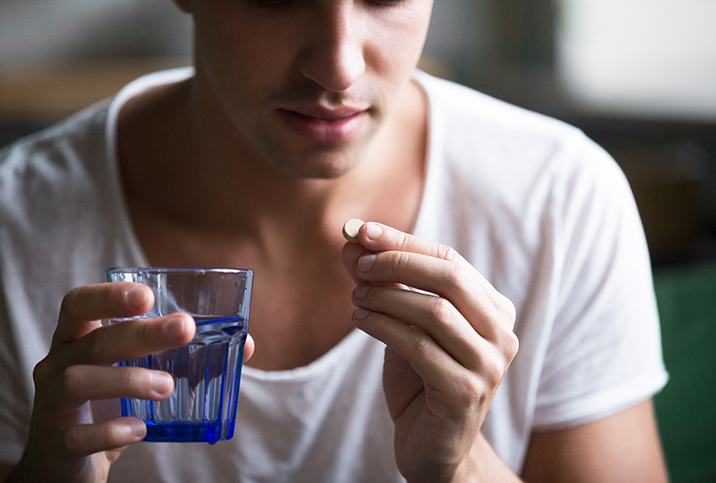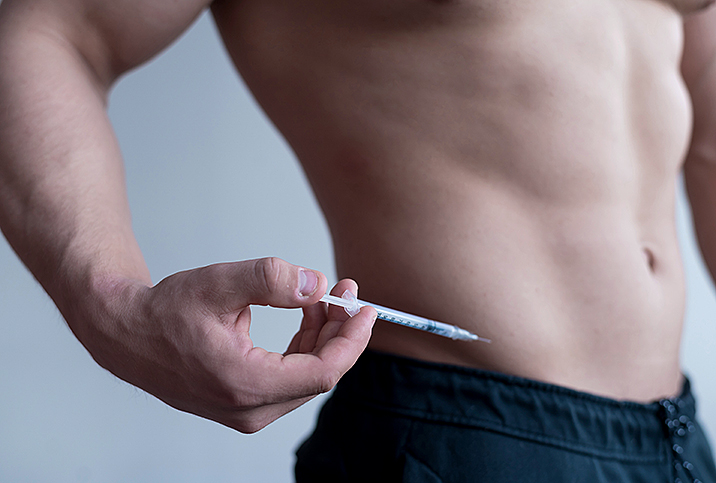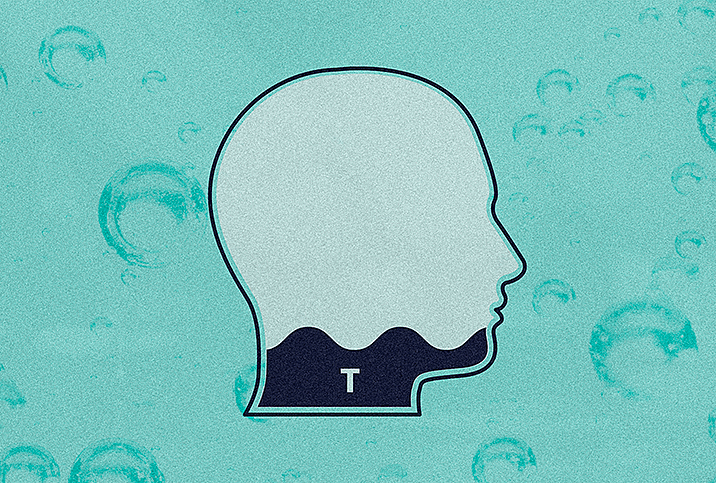How Do I Take Testosterone?

A doctor may prescribe testosterone for various reasons, but hypogonadism is the most common. Hypogonadism is a condition in which a man has low levels of the sex hormone testosterone, the lack of which can cause muscle loss, irritability and erectile dysfunction (ED). Testosterone replacement therapy is a first-line treatment for low-T.
Here are the different ways testosterone can be administered, including three you can do, and the precautions you should keep in mind.
Topical
Topical testosterone is applied to the skin through liquids, gels, patches or creams. It's essential to review the instructions before using testosterone to ensure you're getting the intended dosage. If you have any questions about how to use your medication, ask the pharmacist.
Topical testosterone may come in a single-use tube, a packet or a multiuse pump. The skin patch is applied every 24 hours, typically in the evening.
Before applying topical testosterone, be sure the area is clean and dry. Most people place the product on their upper arms, shoulders or thighs. You should avoid putting testosterone directly on your genitals or irritated skin.
After putting the medication on your skin, give it some time to dry before you cover it with clothing. Wash your hands with soap and water to remove any residual medication. You may need to wait a while before swimming or showering so the testosterone doesn't get washed off before it is absorbed.
Oral
Testosterone tablets are attached like a patch near your gums or testosterone capsules can be swallowed, and the testosterone is absorbed into the bloodstream. Oral testosterone is usually meant to be used twice per day.
Transnasal
With at-home nasal sprays, testosterone is absorbed through the nose lining. You may need to use transnasal testosterone more often than other products (about three times per day), but each dose only takes about 10 seconds to administer.
Before using transnasal testosterone, you should blow your nose. After treatment, avoid blowing your nose for the next hour if possible. To improve absorption, you can rub your nostrils together by pinching the middle of your nose.
Injection
You'll need to visit a healthcare professional to receive testosterone injections, which go into the skin or muscle, but fortunately, shots are spaced out every two to four weeks or sometimes weekly. If you don't want to worry about remembering to take other forms of testosterone every day or multiple times per day, injections may work better for your lifestyle.
For some people, the ups and downs of injections may cause unpleasant side effects in mood and energy because testosterone levels spike immediately after the shot and gradually go back down. If this is the case, you can talk to your healthcare provider about switching to a form of testosterone that's released on a more consistent basis.
Implants
Testosterone implants are another option that avoids the need for daily doses. Sometimes called pellets, slow-release testosterone is implanted by a healthcare professional underneath your skin. A replacement is needed every three to six months. Testosterone pellets are typically inserted near the hips or buttocks. Once they're in, you won't have to think about them again until it's time for a new implant.
Risks and contraindications
Although a testosterone boost can be beneficial, medication is not for everyone. Testosterone has short-term and long-term side effects that can put your health and safety at risk. Doctors generally discourage people with the following issues from taking testosterone:
- Breast cancer
- Diabetes
- Elevated blood levels of calcium
- Enlarged prostate
- Heart disease
- Kidney disease
- Liver disease
- Lung disease
- Prostate cancer
- Sleep apnea
Men older than 65 and those who would like to have children soon are not suitable for testosterone in most cases. Testosterone products can cause serious harm to children and pregnant or breastfeeding women who come into contact with them. Keep testosterone in a secure location and follow the instructions to dispose of any excess product safely.
Seek care from a qualified healthcare provider who will test your blood levels periodically to ensure that your body responds well to treatment. Be sure to let your provider know about any other medications or supplements you take, even over-the-counter products, as these may interact with testosterone.


















